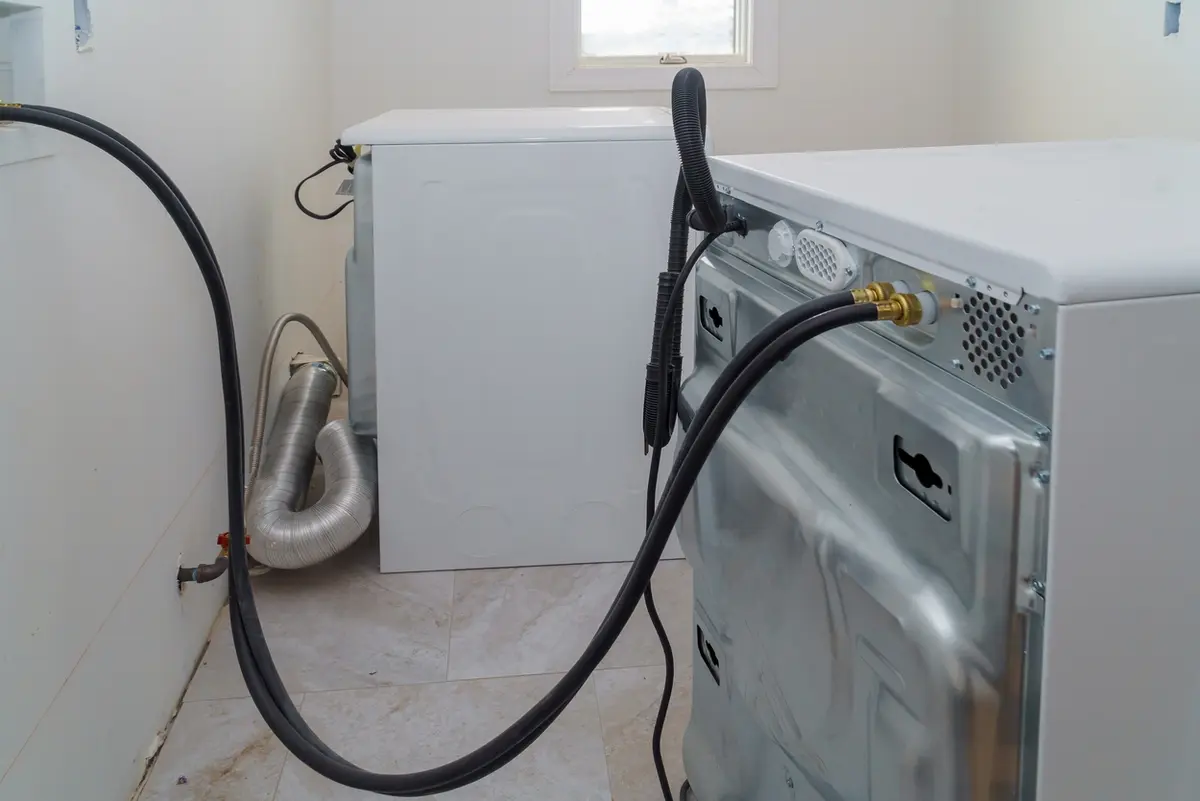Laundry
The Ultimate Guide to Washing Machine Hoses

Washing machine hoses connect your washing machine to the water supply and are crucial for ensuring proper function. Over time, these hoses can become a significant cause of water damage in the home if not properly maintained or replaced. Here’s everything you need to know about washing machine hoses, including why they leak, how to select and install them, and how to maintain them for long-term reliability.
Why Washing Machine Hoses Leak
- Wear and Tear
Over time, all washing machine hoses experience wear and tear, which can lead to leaks or bursts. This is caused by high water pressure and hydraulic shock (water hammer), which increases pressure within the hoses after each cycle. - Poor Water Quality
Hard water or water with a high mineral content can corrode hoses, causing sediment buildup inside the hose and potentially leading to leaks or bursts. - Installation Errors
Improper installation, such as failing to tighten hose connectors or twisting the hose, can lead to leaks. Ensuring at least 4 inches of space between the washing machine and the wall can help prevent hose damage during installation. - Worn Rubber Washer
A rubber washer seals the hose to the water valve. Over time, this washer can wear down and become loose, allowing water to leak through.
How to Select Washing Machine Hoses
When choosing washing machine hoses, consider durability and safety. There are three main types of hoses:
- Rubber Hoses
- Least durable option
- Prone to cracking and corrosion over time
- Not the industry standard and generally not recommended for safety
- Reinforced Rubber Hoses
- More durable than regular rubber hoses
- Reinforced with polyester mesh or braided rayon, offering better resistance to wear
- A solid option for most households
- Braided Stainless Steel Hoses
- The industry standard for durability and safety
- Contains a rubber hose encased in a strong stainless steel braid
- Often comes with an auto-shutoff feature, which adds an extra layer of protection
How to Install Washing Machine Hoses
Proper installation is key to ensuring the longevity and safety of your washing machine hoses. Here are the steps to follow:
- Turn Off Power
Switch off the washing machine at the breaker and unplug it from the outlet. - Move the Washing Machine
Gently move the washing machine away from the wall to access the water valves and hose fittings. - Turn Off Water Supply
Shut off the water supply at the valves located behind the washing machine. - Remove Old Hoses
Place a bucket and towels underneath the hoses to catch any residual water. Disconnect each hose one at a time, turning the hose fittings clockwise, using pliers if necessary. - Install New Hoses
Connect the new hoses to the water supply valves. Tighten them by hand, then use pliers for a secure fit. Repeat the process to connect the hoses to the washing machine, ensuring the correct color coding (red for hot and blue for cold). - Turn On Water Supply
Turn the water valves back on and check for leaks. If there are no leaks, plug the machine back in and push it into place. - Ensure Proper Clearance
Ensure there is at least 4 inches of space between the washing machine and the wall, and that the hoses are not twisted or bent, which can cause wear.
Preventive Care Tips
To prolong the life of your hoses and avoid potential leaks, follow these maintenance tips:
- Inspect Regularly
Check your hoses frequently for signs of wear, corrosion, or twisting. - Replace Every 3-5 Years
Even if the hoses seem fine, replace them every three to five years to prevent unexpected failure. - Install a Water Hammer Arrestor
A water hammer arrestor can help absorb the shock and pressure changes in the hoses after a washing cycle, reducing the risk of damage. - Turn Off Water When Not in Use
Turn off the water supply to your washing machine when not in use to minimize the pressure exerted on the hoses. - Hire a Professional if Needed
If you are unsure about the installation, hiring a professional plumber can ensure the hoses are properly fitted and installed.
By following these steps and tips, you can ensure your washing machine hoses are properly installed, maintained, and replaced when necessary, reducing the risk of leaks and water damage in your home.
